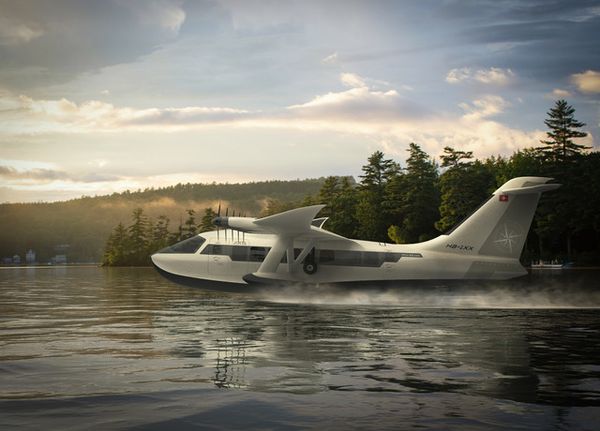5G is being rolled out across the United States but is being scrutinized on whether or not it poses a threat to safety in the air. 5G uses frequencies between 3.70 and 3.98 GHz, which is very similar to what radio altimeters on aircraft use. Radio altimeters are used to determine the altitude of aircraft during critical phases of flight. One of the critical phases of flight is when visibility is reduced, and instruments aids must be used to land instead of visual aids. According to the Radio Technical Commission for Aeronautics "failures of these sensors can lead to incidents with catastrophic results resulting in multiple fatalities."

The Airlines for America trade group released a statement approximating that 345,000 U.S. passenger flights and 5,400 cargo flights would be delayed, diverted, or canceled every day. This would then impact 32 million passengers, and millions more awaiting packages, or other important cargo. In a letter written in November concerning 5G operations, the aviation industry wrote "air cargo and commercial air travel will likely cease at night and in any weather where a pilot cannot see the runway." When weather is unfavorable an ILS (instrument landing system) approach is carried out. It would specifically affect the CATII and CATIII approaches which utilize the radio altimeter to determine the altitude. CATI ILS approaches are based on decision height and would not be affected by 5G, but many airports do not have the system and it can be an expensive cost to build.

Verizon and AT&T the two leaders in the 5G roll-out agreed to a voluntary delay on rolling out a full-powered 5G system nationwide. During this time the FAA, AT&T, Verizon, and others will work to find a safe way for airlines to continue flying, and the wireless companies to roll out 5G. However Verizon believes that "air safety is of paramount importance, but there is no evidence that 5G operations using C-Band [5G] spectrum pose any risk to aviation safety," said a spokesperson for the company. The company even pointed out that "dozens of countries already use 5G." France and other European nations added so-called "buffer zones" around airports, which helps make sure that aircraft can take an approach safely onto a touchdown zone. Like Europe, the FAA listed 50 airports that will have buffer zones from 5G. More airports need these buffer zones, but AT&T and Verizon only agreed to 50 airports.

Unlike other countries, the FAA points out that the U.S. lacks some laws that other nations have around 5G. One of the laws is that in France and other nations 5G antennas are pointed down toward the ground to prevent and limit harmful interactions, whereas the U.S.' antennas are not. Another fact is that even with the U.S. temporary lower levels of 5G it is still more than 2 times higher than other countries' 5G levels. The FAA is currently testing different radio altimeters to see if they can safely operate in the 5G environment. If AT&T and Verizon roll out 5G before the FAA has found a solution, more delays and cancellations are to be expected until a solution can be found.
Frontier Airlines Wraps Up 2025 with Major International Expansion from Atlanta » Austrian Airlines Abruptly Terminates Wet Lease with Braathens Regional Airlines » Air Canada Rouge to Launch Boeing 737 MAX 8 Operations »
Comments (0)
Add Your Comment
SHARE
TAGS
NEWS 5GApproachesAmericanUnitedAirportFAARECENTLY PUBLISHED
 The Runway is Obsolete: Jekta Swiss is Resurrecting the Flying Boat for the 21st Century
AeroXplorer sat down with George Alafinov, CEO & Co-founder of Jekta Swiss. In conversation, he discussed the company's unique value proposition and how he sees his aircraft revolutionizing the amphibious aircraft industry.
STORIES
READ MORE »
The Runway is Obsolete: Jekta Swiss is Resurrecting the Flying Boat for the 21st Century
AeroXplorer sat down with George Alafinov, CEO & Co-founder of Jekta Swiss. In conversation, he discussed the company's unique value proposition and how he sees his aircraft revolutionizing the amphibious aircraft industry.
STORIES
READ MORE »
 Why Fast Price Estimation Has Become Critical for Brokers and Clients
In today's private aviation market, speed is no longer a "nice to have." It's an expectation. Brokers, operators, and clients all work under tighter timelines, higher price sensitivity, and far less tolerance for vague answers. When someone asks, "How much will this flight cost?" they don’t want a rough guess tomorrow; they want a credible answer now.
INFORMATIONAL
READ MORE »
Why Fast Price Estimation Has Become Critical for Brokers and Clients
In today's private aviation market, speed is no longer a "nice to have." It's an expectation. Brokers, operators, and clients all work under tighter timelines, higher price sensitivity, and far less tolerance for vague answers. When someone asks, "How much will this flight cost?" they don’t want a rough guess tomorrow; they want a credible answer now.
INFORMATIONAL
READ MORE »
 The Top 5 Longest Flights in the World
Technology continues to transform the way we live, work, and connect. Few industries embody this more than air travel, which has effectively shrunk the world in recent years. Journeys that would have once seemed impossible can now be completed in mere hours. Here's a look at the World's Top 5 flights, ranked by distance.
INFORMATIONAL
READ MORE »
The Top 5 Longest Flights in the World
Technology continues to transform the way we live, work, and connect. Few industries embody this more than air travel, which has effectively shrunk the world in recent years. Journeys that would have once seemed impossible can now be completed in mere hours. Here's a look at the World's Top 5 flights, ranked by distance.
INFORMATIONAL
READ MORE »



